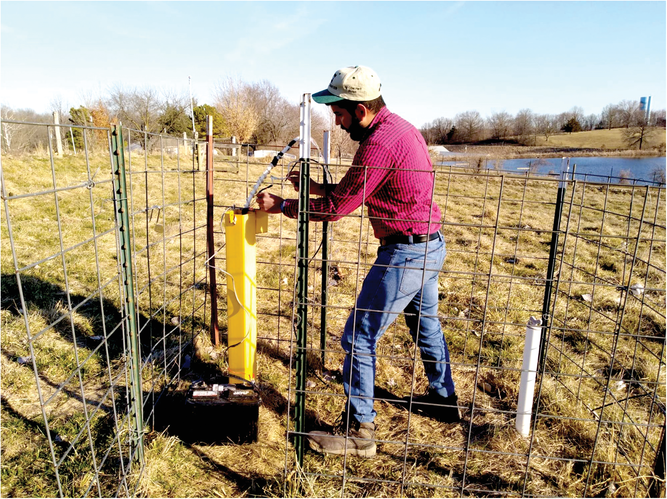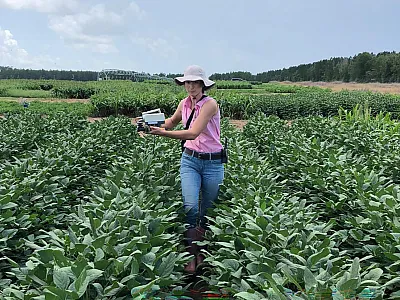Trees and Grasses Reduce More Groundwater Nitrogen Than Just Grasses

Agricultural practices pollute surface and groundwater with nutrients, and it is extremely costly and time‐consuming to remove those pollutants. Contaminated groundwater with excess nutrients such as nitrogen adversely affects the environment and human health. Agroforestry buffers can help reduce nitrogen in groundwater. However, studies that evaluated effects of riparian agroforestry buffers on groundwater nitrogen in grazed areas are limited in the literature.
A study led by University of Missouri researchers monitored two transects of wells representing three landscape positions on a grazed hillslope with agroforestry buffers. Their objective was to determine the effects of buffers made of trees and grass and grass‐only buffers on groundwater’s dissolved nitrogen (DN) and total nitrogen (TN) concentrations. The study found 99 and 85% reduction, respectively, of DN and TN after groundwater passed the tree and grass buffers. The grass‐only buffers reduced DN concentrations by 94% and TN by 62%.
The study highlights the vital role of riparian buffers in reducing groundwater nitrogen. Since agroforestry buffers can reduce almost all the nitrogen in groundwater, policymakers and natural resources agencies can promote adoption of riparian agroforestry for groundwater purification and for other ecosystem services.
Adapted from Salceda, M., Udawatta, R.P., Anderson, S.H., & Mendis, S.S. (2023). Agroforestry buffers on nitrogen reduction in groundwater on a grazed hillslope. Agrosystems, Geosciences & Environment, 6, e20370. https://doi.org/10.1002/agg2.20370
Text © . The authors. CC BY-NC-ND 4.0. Except where otherwise noted, images are subject to copyright. Any reuse without express permission from the copyright owner is prohibited.











